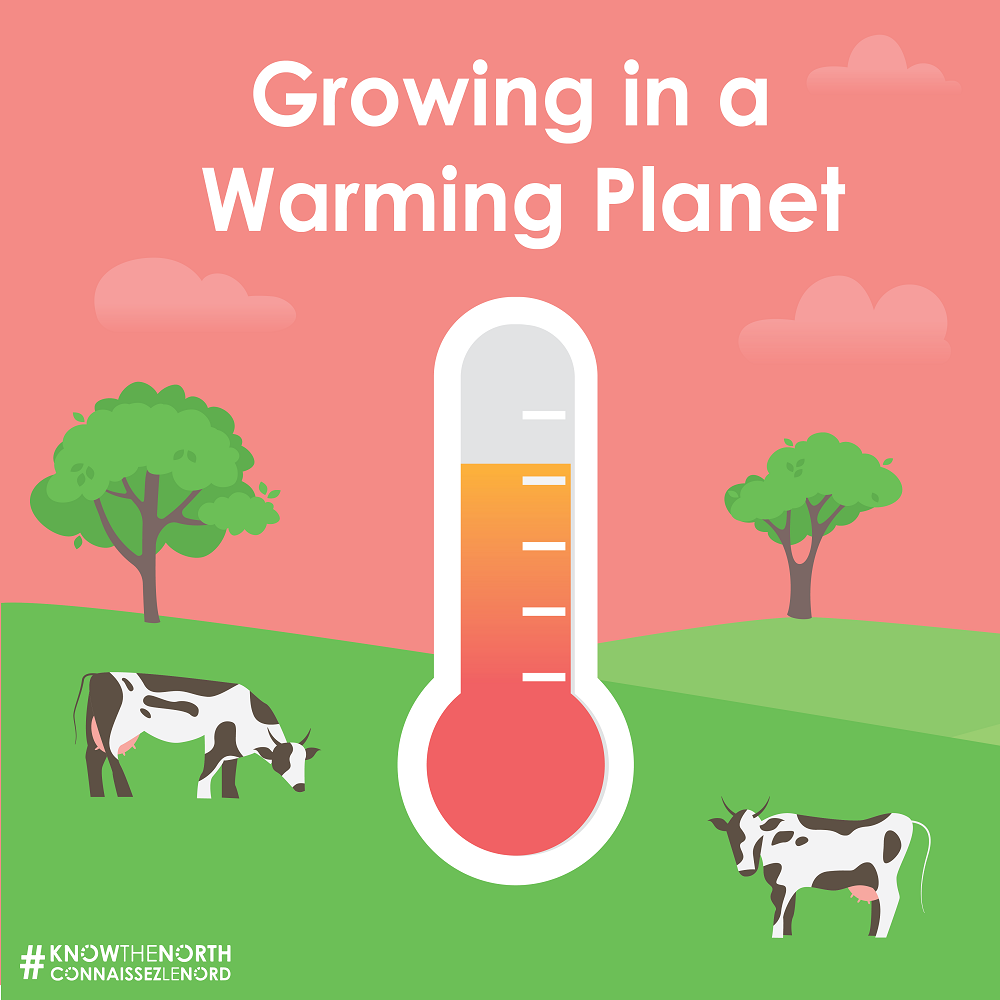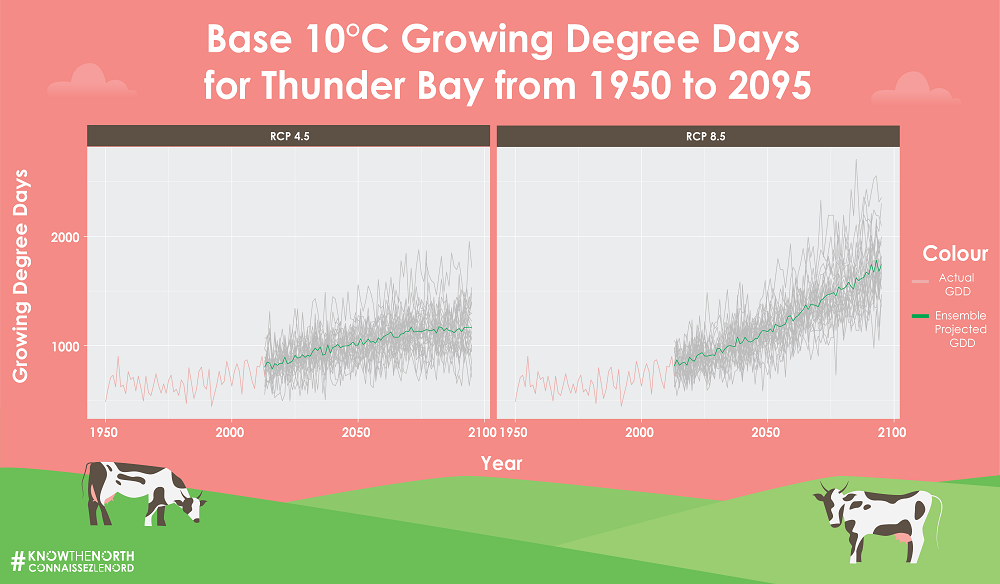Growing in a Warming Planet
May, 2022 - This article first appeared in The Walleye Magazine, May issue.

If a restaurateur in Thunder Bay wanted to see what potential local products they could showcase in their farm to table venture, they better meet the neighbours that can help make that dream a reality. One way to do so is via ConnectNORTH, which is a GIS-based tool that maps out industry supply chains such as agriculture.
Within 75 km of the City of Thunder Bay there are 12 operations specializing in fruits and vegetables, 47 cattle operations, 29 dairy operations and 8 egg and poultry operations.
However, notice that among these producers, there’s a fairly limited number of options for fruits and vegetables, and many more cattle and feedlot operations? This lack of fruits and vegetable producers is a great proxy for measuring the growing season and the type of crop that can be sustained in the 10-degree Growing Degree Day (GDD) score. In a nutshell, the GDD score of a location is the sum total of the average temperature of a place above a set threshold (in this case 10 degrees C).

Source: https://climateatlas.ca/map/canada/dd10_2030_85#z=9&lat=48.51&lng=-89.41&grid50k=052A06
A quick look at ClimateAtlas.ca gives a strong hint as to why Thunder Bay has so few fruits and vegetable operations – it has a 10-degree GDD score of about 700. This zone makes it easy to grow feed for cattle operation, but too cold for commercial production of fruits and vegetables (also putting to the side complex issues like supply chains, labour prices, soil composition). For comparison, the marginal zone for cold weather wines such as Rieslings and Chardonnay according to the Winkler Index is about 1000 GDD. Classic French wines thrive in the 2000-2500 GDD range and your classic fruit bombs like Zinfandel are usually grown in the 4000+ GDD zones.
A quick glance at projected GDDs for Thunder Bay using climate models from Climate Atlas shows that by mid century, the region might get enough heat to grow grapes under a middle of the road (RCP4.5) and a worst-case scenario (RCP8.5) for climate change. Whilst Galileo called wine sunlight held together by water, so much goes into the terroir of wine such as the soil composition and rainfall – and maybe one day we’ll get to taste the region in a glass of wine.
Dr Martin Lefebvre is a Senior Policy Analyst.
Write for us
The content of Northern Policy Institute’s blog is for general information and use. The views expressed in this blog are those of the author and do not necessarily reflect the opinions of Northern Policy Institute, its Board of Directors or its supporters. The authors take full responsibility for the accuracy and completeness of their respective blog posts. Northern Policy Institute will not be liable for any errors or omissions in this information, nor will Northern Policy Institute be liable for any detriment caused from the display or use of this information. Any links to other websites do not imply endorsement, nor is Northern Policy Institute responsible for the content of the linked websites.
Northern Policy Institute welcomes your feedback and comments. Please keep comments to under 500 words. Any submission that uses profane, derogatory, hateful, or threatening language will not be posted. Please keep your comments on topic and relevant to the subject matter presented in the blog. If you are presenting a rebuttal or counter-argument, please provide your evidence and sources. Northern Policy Institute reserves the right to deny any comments or feedback submitted to www.northernpolicy.ca that do not adhere to these guidelines.
